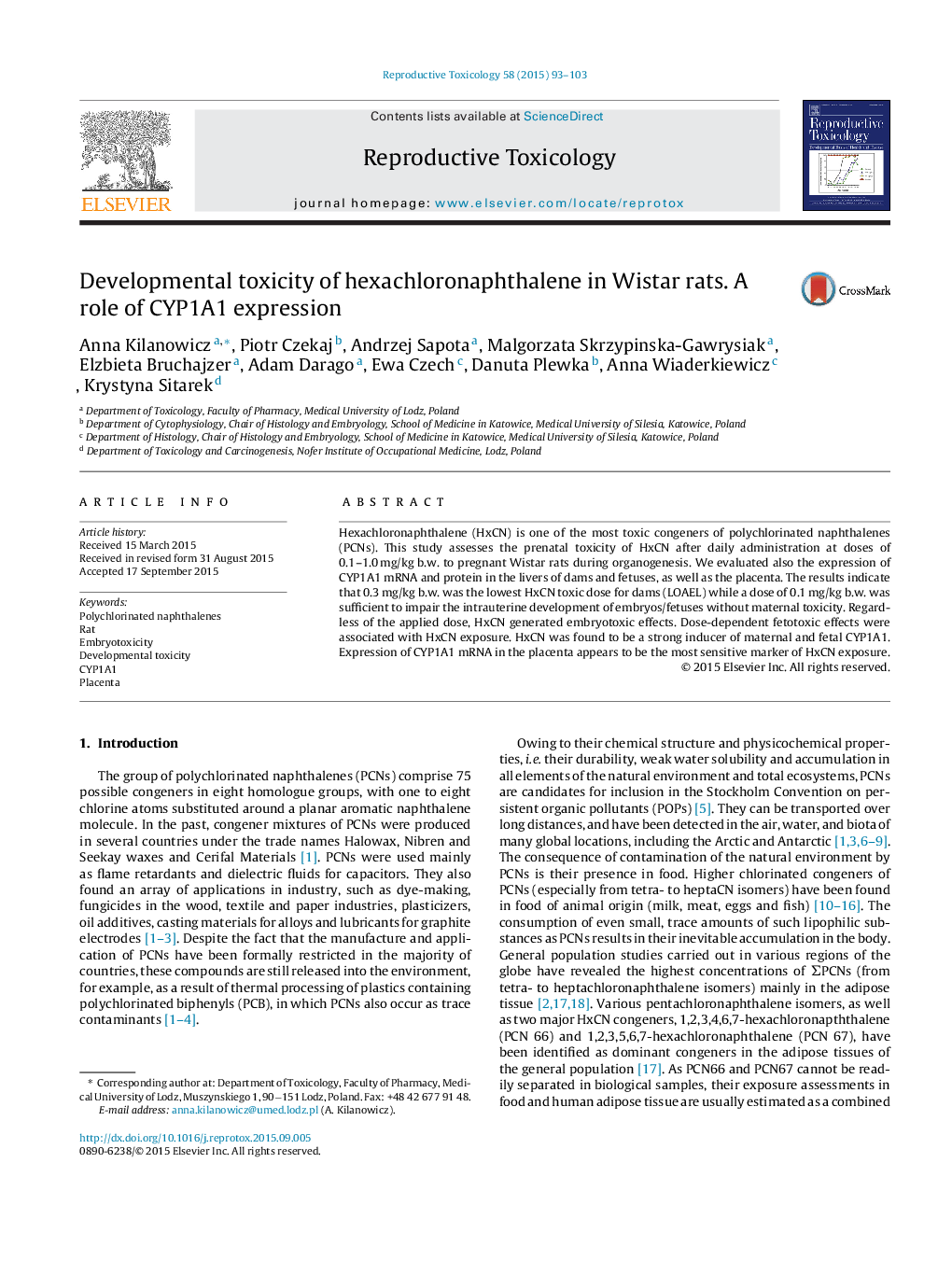| Article ID | Journal | Published Year | Pages | File Type |
|---|---|---|---|---|
| 5858052 | Reproductive Toxicology | 2015 | 11 Pages |
Abstract
Hexachloronaphthalene (HxCN) is one of the most toxic congeners of polychlorinated naphthalenes (PCNs). This study assesses the prenatal toxicity of HxCN after daily administration at doses of 0.1-1.0Â mg/kg b.w. to pregnant Wistar rats during organogenesis. We evaluated also the expression of CYP1A1 mRNA and protein in the livers of dams and fetuses, as well as the placenta. The results indicate that 0.3Â mg/kg b.w. was the lowest HxCN toxic dose for dams (LOAEL) while a dose of 0.1Â mg/kg b.w. was sufficient to impair the intrauterine development of embryos/fetuses without maternal toxicity. Regardless of the applied dose, HxCN generated embryotoxic effects. Dose-dependent fetotoxic effects were associated with HxCN exposure. HxCN was found to be a strong inducer of maternal and fetal CYP1A1. Expression of CYP1A1 mRNA in the placenta appears to be the most sensitive marker of HxCN exposure.
Related Topics
Life Sciences
Environmental Science
Health, Toxicology and Mutagenesis
Authors
Anna Kilanowicz, Piotr Czekaj, Andrzej Sapota, Malgorzata Skrzypinska-Gawrysiak, Elzbieta Bruchajzer, Adam Darago, Ewa Czech, Danuta Plewka, Anna Wiaderkiewicz, Krystyna Sitarek,
